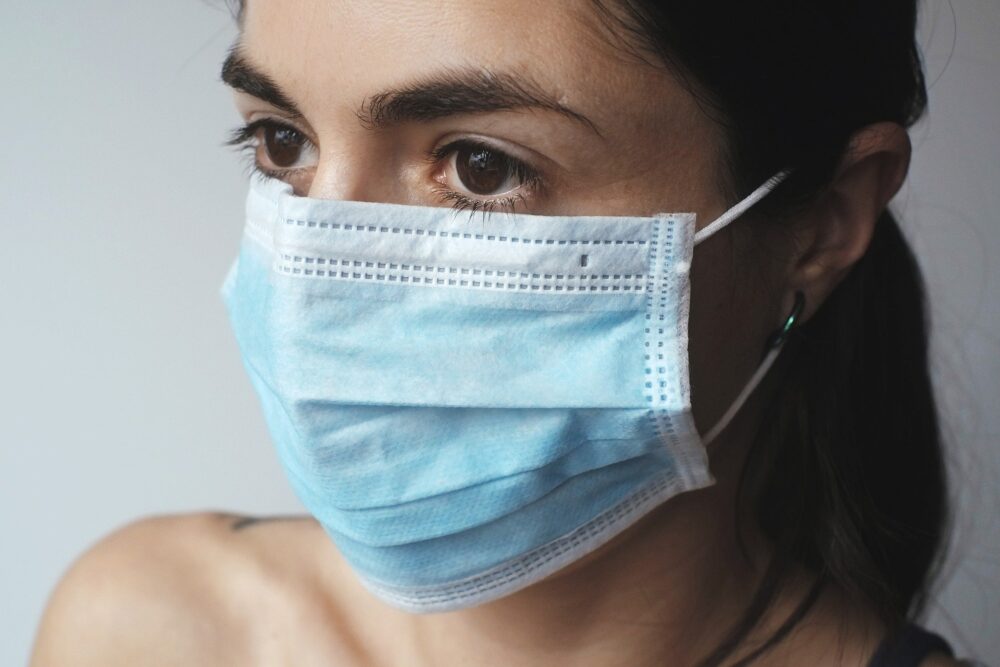Running into a friend looks very different during the COVID-19 pandemic: both parties pause and take extra moments to scan for familiar cues on their mask-wearing counterpart. When trying to recognize masked neighbors or peers, people must rely more on clothes, hair, mannerisms, and other elements to identify the person in front of them. The new normal of mask wearing is changing the way people recognize each other and form connections.
Still, the growing cultural shift of wearing masks has put more attention on people’s abilities to recognize one another, especially when as many as one in fifty people may experience lifelong challenges from difficulty recognizing faces without masks.
Human ability to recognize faces is powerful, and its complexity can be hard to understand. While it is normally extremely efficient, the pauses that masks create highlight the significance of noticing and processing faces in socialization. People are experiencing a small taste of facial blindness when the faces around them are covered, forcing them to rely more heavily on other identifying features in the absence of facial recognition. Though research is still young, recent preprints suggest that people are less able to recognize others with masks. People vary in their ability to recognize faces with limited information, which is suggested by what researchers call the “head scarf effect.” Participants from Egypt and the United Arab Emirates, where many women cover their hair, performed better than British and American participants at identifying faces when only the eyes, nose, and mouth were showing. In Asian countries, where wearing protective masks in public was an established norm before the pandemic, facial recognition may also be a smaller hurdle. Still, the growing cultural shift of wearing masks has put more attention on people’s abilities to recognize one another, especially when as many as one in fifty people may experience lifelong challenges from difficulty recognizing faces without masks.
Facial blindness, formally known as prosopagnosia, is a neurological disorder characterized by an inability to recognize faces. Some may struggle to recognize familiar faces or even their own, and others may be unable to differentiate between unknown faces. There are even severe cases in which people cannot distinguish faces from objects. Some forms appear from birth, and other facial blindness can develop from brain trauma or neurodegeneration. The disorder is not a result of deficits in vision, intelligence, memory, or learning but is instead associated with the fusiform gyrus, an area of the brain that activates in response to faces. Abnormalities in the right fusiform gyrus, a certain fold in the brain involved in facial perception and memory, are often associated with prosopagnosia, indicating the brain has a highly developed and specialized system for facial perception. Some levels of prosopagnosia are present in children on the autism spectrum and may contribute to hindered social development.
The new normal of mask wearing is changing the way people recognize each other and form connections.
Developmental prosopagnosia has a large impact on lives, as children may have difficulty recognizing friends and teachers, leading to potential social struggles. Some adults with prosopagnosia may choose careers that do not require frequent face-to-face contact, avoiding similarly difficult situations. It is also common for those with this disorder to struggle in following films or television shows because they are unable to recognize different characters between scenes. According to Cell Press, people with prosopagnosia often grow up mistakenly “attributing their face recognition difficulties to attention deficits or poor memory” before becoming aware of their disorder. Some develop anxiety and depression from facing persistent social challenges.
Individuals with developmental prosopagnosia learn to follow alternative cues to replace facial recognition. For example, this may involve characteristic facial features such as a unique nose or other factors like voices, hairstyles, and clothing. Social situations in which such cues are unavailable, such as within environments needing similar clothing or where voice cues are not present, are often difficult for those with prosopagnosia. A change in an identifying feature like hair or an addition of a hat can lead to misidentification. This use of new cues bears some resemblance to how we work around our lack of facial perception during the COVID-19 pandemic, leading every individual closer to understanding prosopagnosia and reminding them not to take their abilities for granted.
This use of new cues bears some resemblance to how we work around our lack of facial perception during the COVID-19 pandemic, leading every individual closer to understanding prosopagnosia and reminding them not to take their abilities for granted.
When abilities or senses are limited, they can become important learning opportunities for those who do not normally have these limitations. The brain is incredibly adaptive, and neurodivergent people can thrive under a range of challenges. As wearing face masks has become the new normal, observing its social and behavioral effects over a long timespan can reveal within every individual some of the limitations faced by people with prosopagnosia.
Perception (2015). DOI:10.1068/p7940
PsyArXiv (2020). DOI:10.31234/osf.io/zjmr8
